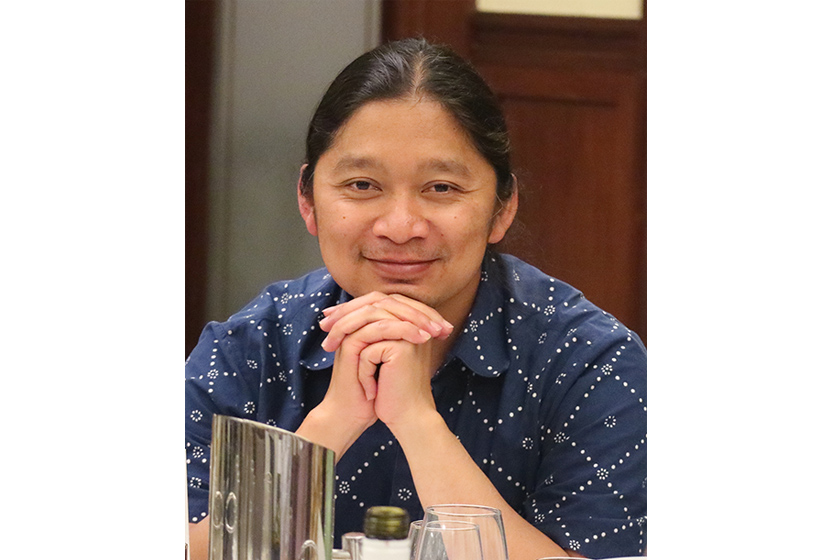
19 April 2024
Call for Expressions of Interest: Split-Site Masters Scholarship for Cohort 9-2025
Australia Awards in Indonesia (AAI), on behalf of the Australian Department of Foreign Affairs and T... Read More
The Australia Awards are prestigious, transformational scholarships and short courses offered to emerging leaders for study, research and professional development in Australia

14 Nov 2017
 Indonesian Scientist’s Leading Role in Discovery of a New Orangutan Species
Indonesian Scientist’s Leading Role in Discovery of a New Orangutan Species
The recent discovery of a new orangutan species on Indonesia’s Sumatra Island has captivated the scientific world. The Tapanuli Orangutan is the third-known orangutan species on the planet after the Sumatran and Bornean orangutans and it is the first discovery of a new great ape in a century. The enormity of the finding cannot be overstated.
Key to this groundbreaking finding was joint research by Australian-trained Indonesian biological anthropologists, Anton Nurcahyo, who is now undertaking his PhD at The Australian National University (ANU), under an Australia Awards scholarship.
Nurcahyo is calling on the world to protect the species, which is now under threat from encroachment.
“The world should pay attention to this (finding),” he said. “This is not just another scientific finding; it highlights the need to protect the dwindling population of Tapanuli orangutans, which currently stands at just around 800. It’s hoped the discovery of this new species will usher in greater attention and stronger protection of their habitat.”
The passionate plea is a reflection of the 42 year-old’s lifetime commitment to studying primates.
Nurcahyo is one of very few Indonesian biological anthropologists. He has been studying and working in primates conservation for over 20 years, since his student days at the University of Gadjah Mada in Yogyakarta. As part of his bachelor’s degree thesis in faculty of forestry, majoring in forest resources conservation, he studied siamang behaviour in the National Park of Bukit Barisan Selatan National Park in Sumatra.
After completing his Master degree at ANU, he pursued his PhD with a thesis titled, ‘Morphological Assessment in the Orangutan, and implications for the conservation program’. Morphological study in biology refers to the study of shape, size and structure of animals. His study involves more than 500 skulls and is considered the largest dataset on orangutan morphology in the world. The newly discovered Tapanuli orangutans have different genetic, skeletal and dentition characteristics to the two other species of orangutan, and were classified as a third species.
Early records of the Tapanuli Orangutan date as far back as 1939 and study co-author Erik Meijaard of ANU rediscovered the population in 1997 when he spent several years mapping where orangutans lived in Borneo. Later, scientists found that genetically and ecologically the population in Batang Toru is distinct. However, the finding must be verified by a morphological study, something in which Nurcahyo was heavily involved.
The Australian education system, Nurcahyo says, fosters a healthy degree of egalitarianism that breaks down formal barriers between students and lecturers.
“Our supervisor has a weekly tradition of a joint lunch with the students along with guest lecturers or noted visiting speakers,” he said. And yet, the system is packed with critical learning materials, encouraging students to dig deeper into the subject, he adds. He’s been doing his masters and PhD under the supervision of a well-known primatologist and taxonomist, Professor Colin Groves.
Studying in the capital city Canberra has also been a plus for this father of a six-year-old son. With its growing café scene, he finds the capital cosmopolitan and lively, and yet liveable enough for his family. Canberra was recently voted by Lonely Planet as the third “must visit” city in the world in 2018, beating the larger and more famous Australian cities such as Sydney and Melbourne.
Looking ahead he sees himself having a key policymaking role in environmental conservation in Indonesia.
“I hope to be involved in the protecting of more forest for conservation purposes,” Nurcahyo said. “Biological anthropology can be very useful to gain better understanding of how to protect our environment.”
Orangutan photos courtesy of Maxime Aliaga. For more information about the research please click here.

Share this article on:
 Related News
Related NewsThis website uses cookies to improve your website experience. We may also use cookies to analyse website data so that we can improve our online services. To find out more visit our privacy policy.

